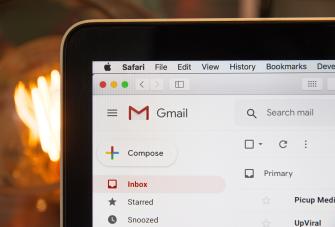How to Create an Influencer Marketing Program
Open any social media app and you’ll see product promotion everywhere. Similar to celebrity endorsements on TV commercials, everyday people are advertising everything from food to software.
This type of marketing is well-received by consumers and is growing in popularity. So, how can your store create an influencer program?
What is influencer marketing?
In simple terms, influencer marketing is paying social media users who have to endorse products. Typically, these people have large followings who share similar interests.
Influencers get their name from the ability to influence their followers. An endorsement is seen as genuine and encourages followers to purchase the product or take other positive actions.
While you may think influencers are viral stars with huge followings, that is not always the case. More and more brands are working with micro-influencers - these people have small but loyal followings of only a few thousand users.
Since these accounts charge modest amounts, any business can get involved in influencer marketing.
What does influencer marketing do?
Influencer marketing primarily accomplishes these purposes:
- Boost brand awareness: Are you rolling out a new product? Do you want to reach new audiences? Building brand awareness helps introduce your business to new faces.
- Drive immediate sales: Running a limited-time offer? Trying to liquidate inventory? Influencers are great at creating buzz for short-term, must-have deals.
- Gain social media followers: Are you new to social media? Have you lost followers after a PR disaster? Work with influencers to rebuild your reputation.
- Generate traffic: Do you want to build buzz for an upcoming event? Are you growing your email and remarketing lists? Sending traffic to your website will help you capture and capitalize on user data.
How to create an influencer program for your store
Getting started in influencer marketing is easy. You pay someone to promote your product or service, and that’s it!
Well, not really. While it is not hard to pay for a single endorsement, setting up an effective influencer marketing campaign is not a simple task. You need a sound strategy to be sure you choose the right influencers and get a return on your investment.
Let’s go over the steps of creating an influencer marketing program.
Decide the compensation model
How you pay influencers will affect the outcome of your program. Some social media stars will only take upfront payments, while others will agree to only earn money each time your business earns a sale.
Here are a few standard payment plans:
- Paid per post: Upfront, one-time payments are expected by many influencers. You pay for a social post and can supply the copy to go with the ad. Sometimes, influencers will put time restrictions on these deals, such as only allowing paid posts to stay on their account for 24 hours.
- Referral link: A referral link directs users to the product the influencer is promoting. Because the link is unique, you can track how many people click it and buy the product. The influencer receives a portion of the proceeds from their link.
- Promo/discount code: Similar to affiliate links, promo codes pay the influencer with each purchase. Shoppers enter the code at checkout and receive a small discount.
Ideally, you will likely want to use a mix of these during your campaign. Paid posts are great for building awareness, but they do not always drive sales. On the other hand, referral links boost sales because the influencer has financial motivation to sell more products.
Establish a buyer persona
The internet makes advertising easier than ever, but blanket promotion will only end in wasted ad spending. You want to be sure that the right people are seeing the right messages.
Think about your ideal shopper so you can create a buyer persona. Then, you’ll be able to partner with influencers who interact with this target audience.
Here are some factors to help you find the ideal buyer:
- Home life: Is the ideal person single or married? Do they have children?
- Location: Where do they live? Are they in the city or country? Do they have unique demands?
- Income: How much do they earn? How much do they spend?
- Interests: What are their hobbies? Who do they follow on social media?
Choose influencers
Selecting the right social media accounts to work with is crucial. You want someone who has a large following and high engagement rates. Most importantly, you want to work with someone who speaks to your buyer persona.
To get started, start looking for popular accounts in your niche.
However, quite a few large accounts are inflated with fake likes and followers. It is not uncommon for someone to pay for these fake numbers just to appear more popular. Someone might seem to have over a million followers, but half of them can be bots. If you work with this person, you will not see a good return on your investment since fewer people than expected will interact with your promotion.
The kinds of insights about a social media account you might want to find include:
- Engagement rate: The percentage of their followers like, comment, or engage in other ways with their content.
- Fake followers: The percentage of followers who have been flagged as robots.
- Average likes: The average likes a single post receives.
- Popularity: See if they are gaining or losing followers over time.
Outline expectations
Unfortunately, the world of influencer marketing is still young and many partnerships are not strong or precise enough to be effective. Sometimes the influencer doesn’t abide by the agreement, and other times the company will not pay fairly for the promotion.
You need to be upfront about your expectations once you start discussing opportunities with influencers. Let them know what type of ad you want, how much you will pay, and by when to deliver.
Just as important, you should outline all brand guidelines. If you want to use a certain catchphrase or color, make sure to say it here. If you do not want the influencer to swear or misrepresent your image, also point it out here.
For the best results, create an agreement with this influencer marketing contract template.
Track performance
Lastly, make sure you monitor each partnership and remove those that don’t offer a good return on investment. This process is easy if you are using promo codes and affiliate links since all data is automatically logged.
If you are paying per post, you may need to watch engagement levels and read comments. For example, some influencers will post an ad but their comments will all be negative. In cases like these, your brand has the opposite effect and could even harm your image with that audience.
Take your physical store online with Epos Now
Expanding from a brick and mortar store to a fully functioning e-commerce website can increase profits immensely. Unfortunately, the process is not always easy and intuitive. From managing your digital inventory to coordinating payment and shipping, you can quickly become overwhelmed.
Epos Now retail point of sale systems simplify this process by linking your online and physical locations. With Epos Now, you can:
- Synchronize inventories: All new products added to your physical store can be easily reflected online.
- Build a beautiful store: Create a website with Shopify or BigCommerce directly from your POS.
- Offer an omnichannel experience: Blend the online and in-store experience so customers get seamless interaction no matter where they go.
- Tap into 100+ apps: From email marketing and customer loyalty to accounting and payment processing, we offer integrations to grow your business.
Call today to learn more about Epos Now point of sale systems.




